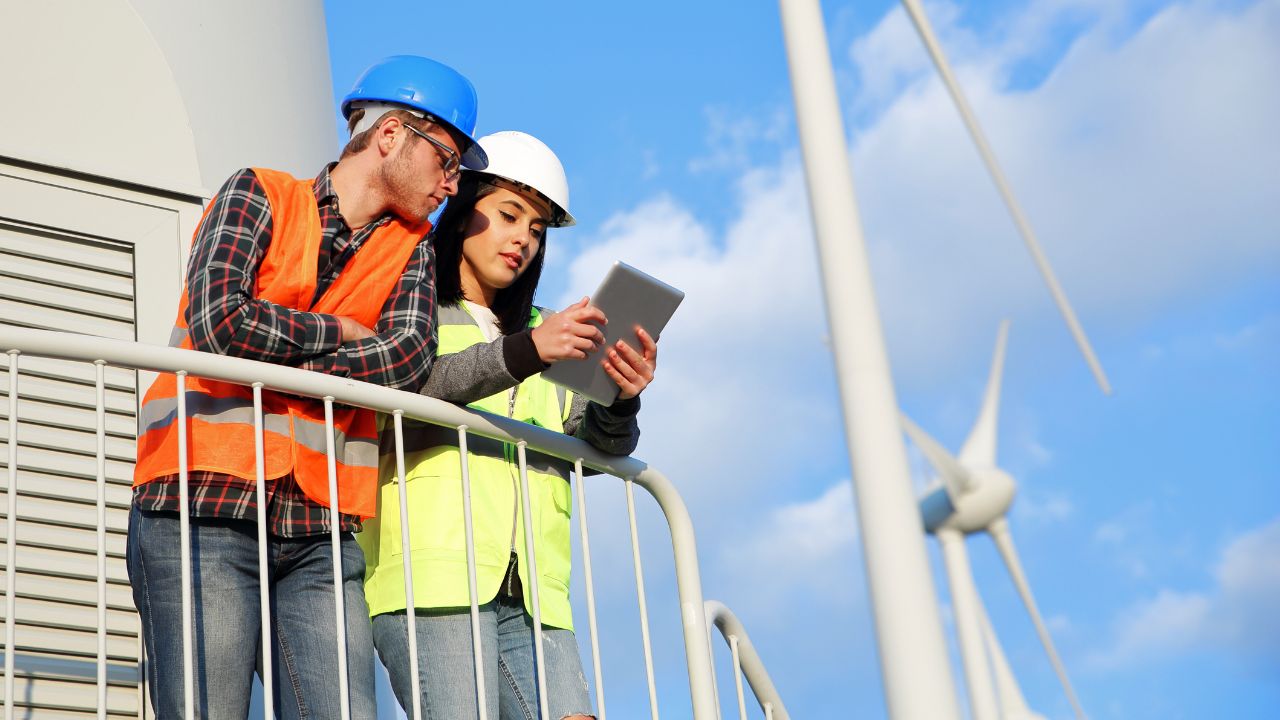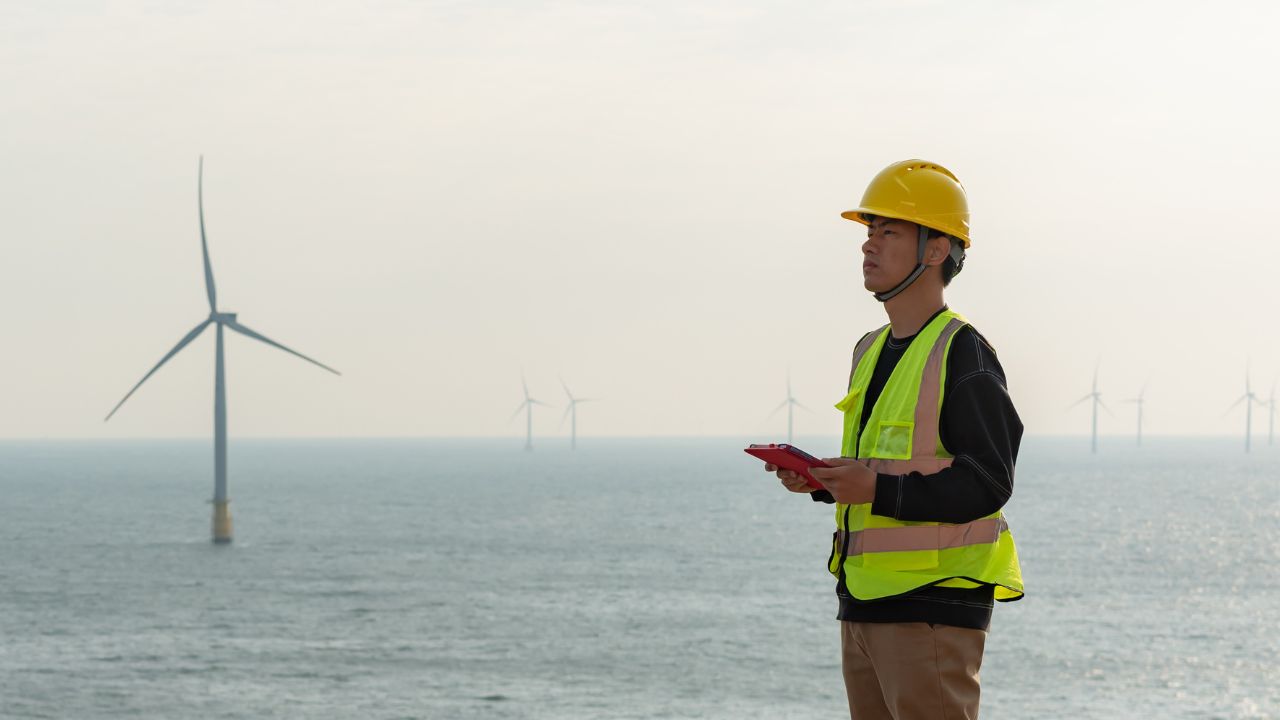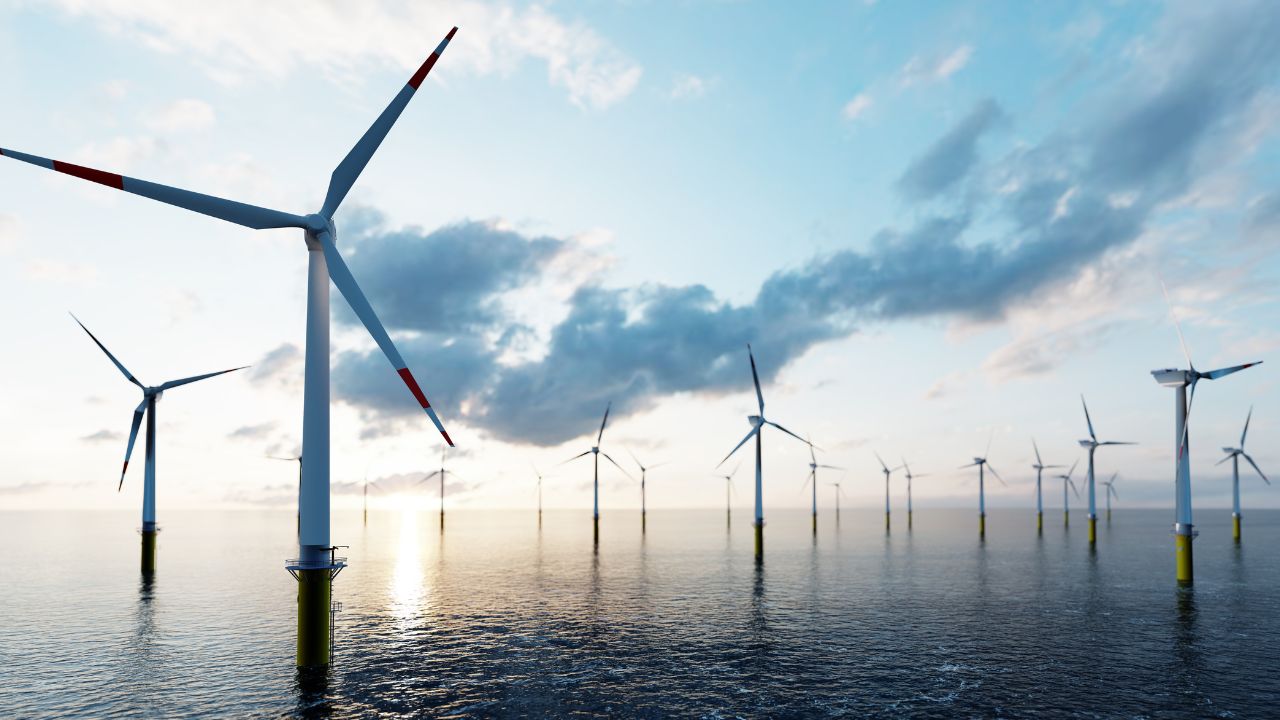The Race to Meet Global Net Zero Goals - What We’ve Learned from The GWEC Global Wind Report 2024
13 May, 202413:06The wind industry is experiencing remarkable growth. At COP28, nearly 200 governments agreed...

The wind industry is experiencing remarkable growth. At COP28, nearly 200 governments agreed on the historic goal of tripling renewable energy capacity.
With over 1 terawatt (TW) of wind capacity already installed globally and an expected 2TW to be reached before 2030, many are curious about the future of the wind energy industry.
In this blog, we will analyse the key findings from the Global Wind Energy Council’s Global Wind Report 2024 and the ambitious targets for meeting the sector’s goals.
The Race to Meet Global Sustainability Goals
Embracing wind power is essential for achieving long-term sustainability and ensuring a cleaner, more sustainable future. 2023 saw the highest number of new installations in history for onshore wind and the second highest for offshore wind.
In fact, the wind industry experienced its most successful year on record in 2023, with new installations of 510GW – a 50% rise from previous years.
However, with more countries and governments committing to 2030 de-carbonisation targets, global wind growth needs to rapidly accelerate to meet these goals, with annual wind installations needing to triple to at least 320GW over the next decade.
This intense pace of installation brings about several challenges, including:
- Financing
- Supply chains
- Infrastructure buildout
- Talent Shortages
- Land and seabed availability
- Social acceptance
- Policy and regulation challenges
However, connecting 117GW of wind power capacity to the electricity grid in a single year demonstrates the wind industry's resilience and adaptability. The world is moving in the right direction in combating climate change, but much work must be done to catch up with the pace.

Ongoing Supply Chain Challenges
By 2050, the global wind fleet must be roughly eight times its current size, reaching 8TW of installed capacity.
Industry data collected throughout 2023 reflects a risk of manufacturing bottlenecks from mid-decade onward for multiple critical components in the supply chain, particularly gearboxes, generators, blades, and offshore wind-compatible castings, towers, and foundations. Ports and installation vessels with sufficiently large crane capacity are also needed to scale offshore wind.
Another challenge comes from resources; refining critical rare earth minerals for wind turbine permanent magnets is handled almost exclusively by China. The natural resources and refining capacity for these materials are plentiful. Still, centralisation in both mining and refining makes trade restrictions a significant risk for the global industry and renewables targets.
China also leads the global market in manufacturing key wind components like gearboxes (80%), converters (82%), generators (73%), and castings (82%). Concentration risk in manufacturing within the renewables sector poses significant dangers to the industry. Any disruption in the supply chain, whether due to geopolitical tensions, natural disasters, or financial instability, can lead to production delays and cost overruns and ultimately hinder the expansion of the industry.
Some key ways to secure the global wind supply chain are:
- Address fundamental barriers to wind industry growth in land, grids and permitting to increase volume and predictability.
- Industrialise and standardise the wind industry, making designs global and modular.
- Build out regional supply hubs to provide alternative sources for materials and components.
- Implement trade policies that foster healthy, competitive, yet collaborative industries.
A key example of collaboration to facilitate growth came in December 2023, when European OEMs Vestas and Siemens Gamesa teamed up to standardise tower transportation equipment for offshore wind turbines.
At the heart of the partnership is a desire to develop standards allowing the shared use of installation vessels, an expensive and scarce asset. This allows the supply chain to transport components more efficiently and quickly.
As the wind industry begins to scale up production rates to meet renewables goals, collaborative approaches can drive sustainability, low emissions, and waste reduction within the supply chain.

Demand for Talent
Hundreds of thousands of technicians will be required to construct, install, operate, and maintain the world's wind fleet as the world aims to triple its renewable energy capacity by 2030. Given increases in MW capacity, by 2027, almost 43% of the total technician workforce would need to be new talent.
It’s expected that the number of people requiring C&I (Commercial and Industrial) and O&M (Operations and Maintenance) training to meet wind energy growth by the end of 2027 will be:
- Around 77,000 in the USA
- Almost 250,000 in China
- Over 28,000 in India
- And more all over the world.
With numbers like this, there’s a real need for government and industry-led initiatives to train workers to meet demand. The industry must also collaborate with governments to facilitate the transition of workers from industries heavily reliant on carbon-based fuels. Working alongside stakeholders to ensure that the wind value chain adheres to strong governance standards and provides decent working conditions for its workers can ensure a talent-rich worker pool.
Consistent Investment is Needed
The wind industry is facing issues related to revenue stability and supply chain profitability on a global scale. This has caused slower growth and delayed investment decisions in previous years, as well as several contract re-negotiations and cancellations that further slow down the industry.
Additionally, permitting issues and regulations are globally slowing down project development and increasing the costs of projects, while land and seabed rights can be another big blocker during the planning process.
Grids also need investment, as the majority were designed in a different era. Grids were made for large, centralised power plants, making them less suitable for new forms of energy production and in need of investment.
According to the International Energy Agency, grid investment has been stagnant for several years and needs to dramatically double if there is any hope of meeting net zero goals. Equally, cross-border grid integration should be considered to help with distribution goals.
Economics play a crucial role in investment, but certain subregions of the world are often overlooked in their potential to contribute to the energy transition. For example, only 2% of global investment in renewables in the last two decades was made in Africa, despite its vast technical wind and solar resources. It’s essential to direct investment flow to developing countries. Globally (excluding China), annual investment in clean energy for emerging markets and developing economies (EMDEs) needs to scale from roughly $270 billion today to more than $1.6 trillion over the next decade.

The Need for Public Support
To create a sustainable future, it's crucial to get everyone on board with the expansion of renewable energy. This means gaining public support for the size, effects, and planning of this transition. Keeping social harmony depends on making decisions that include input from all involved in individual projects and the entire economy.
The scale of renewable energy growth needed to mitigate climate change will require a lot of land, which may result in environmental and social conflicts that slow down the process.
Opposition to wind power is growing worldwide, with reasons for opposition depending on the local area, cultural beliefs, and economic factors. Some examples include:
- A fisherman may oppose an offshore wind farm because it could affect navigation, interfere with fishing, or disrupt marine life.
- Some native groups may oppose an onshore wind farm if it intrudes on traditional lands, sacred sites, or cultural areas.
To ensure the public feels considered and valued during the wind industry's growth, expediting permitting while minimising project impacts, addressing land rights concerns in both developed and developing nations and managing risks associated with misinformation and disinformation are necessary.

The Global Outlook
The wind industry is becoming more optimistic about its short-term and long-term growth and more confident about its role in delivering the goal to triple renewables capacity by 2030.
GWEC Market Intelligence expects new installations to surpass the previous records and reach 130 GW in 2024, with 791 GW of new capacity likely to be added in the next five years.
Markets to Watch
- Australia has some of the world’s best wind resources, with wind speeds reaching 12 m/s in offshore areas like the Bass Strait. The country has 13.5 GW of installed onshore capacity, though it’s estimated that twice the current wind capacity will be required by 2030 to meet electricity demand.
- 2023 was a pivotal year for the renewables industry in Brazil, with an acceleration of offshore wind planning. Brazil achieved new wind records for the third consecutive year, reaching 4.8 GW of new installed capacity.
- China has the world’s largest renewable power generation system, with the installed renewable energy capacity reaching 1,450GW by the end of last year.
- India has introduced several initiatives, targeting 500GW of renewable energy capacity by 2030, including 140GW of wind, aiming to reach net zero by 2070.
- In 2023, Japan achieved its second-highest wind power installations in the last decade, marking a significant milestone with an overall installed wind capacity of 5,213 MW from both onshore and offshore projects.
Make a difference in the Global Energy Transition
The wind industry needs skilled engineers to help grow and shape the future of renewable energy. Are you looking to be part of this global effort? You can view all our open vacancies or register your CV with us today for free to ensure you’re first in line for future jobs in this exciting and ground-breaking industry.
NES Fircroft’s expert recruitment teams have offices in over 45 countries with cultivated talent pools. Our sector-specific teams source engineering and technical professionals for global roles with some of the biggest names in renewable energy and engineering.
With decades of experience in international expansion, we can also help hire employees from across the globe quickly, compliantly, and with minimal risk. Contact us to discuss how we can support your workforce needs.










